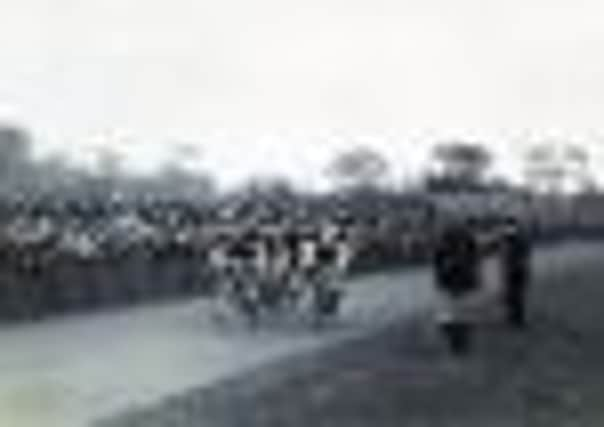Unknown heroes: Can you shed light on Scotland’s forgotten athletes?


Dressed in long white shorts and thin cotton simmets the athletes had sprinted down an ash track, each lane separated from the other by a raised piece of white twine. The men are now forgotten ghosts, their identities unknown. But it takes only a few seconds to recognise that special something etched into their faces which has been passed on from generation to generation, like a baton in a relay race, until it reached today’s Olympic hopefuls: the indomitable will to win.
Each of the men (there were few Edwardian sportswomen) photographed in this remarkable collection released yesterday onto the website of the National Library of Scotland (NLS) had a desire for victory in his chosen sport. From those sodden men who took a tumble into the water jump during a steeplechase, to the pirouetting figure on the pole vault or the lavishly hirsute figure with a handlebar moustache hunched over his actual handlebars in the final sprint of a cycling race, they are all fascinating portraits of the sporting Scotsmen.
Advertisement
Hide AdAdvertisement
Hide AdYet were they the Sir Chris Hoy or Allan Wells of their day? Who knows? Well, perhaps an eagle-eye reader might, and the NLS is appealing to the public for any information about these forgotten sportsmen. The library has posted on its site a collection of 35 sporting photographs taken in the early part of the last century. They give a fascinating glimpse of athletics, cycling and equestrian events in Edwardian Scotland, but very little detail is known about them.
Powderhall stadium in Edinburgh was the venue for the athletics events and Oatridge in Broxburn, West Lothian for the equestrian point-to-point but the locations for the cycling, steeplechase and horse jumping events remain unknown. Graham Hogg, a senior curator at NLS said: “We have had these photographs in our collections for some time. These images reflect the Olympic spirit and we thought it would be good at this time to try to find out more about them.
“We hope someone out there may recognise a relative or have knowledge about these events so we can learn more about what is a fascinating set of photographs.”
Powderhall later hosted one of Scotland’s greatest Olympians, Eric Liddell who triumphed in sprint events at the Edinburgh stadium. He won international fame at the 1924 Paris Olympics when he won gold for Britain in the 400 metres sprint.
The photographs were taken by the Marshall Wane photographic studio in Edinburgh, but the name of the photographer is unknown. Marshall Wane was born in England and had a studio on the Isle of Man before opening an Edinburgh studio in 1879. They are silver print “cabinet cards” which were produced by commercial studios for sale. They are photographic prints mounted on cards, often with the studio’s name on the front and advertising on the back, and were intended for display in parlours on small stands or frames rather than in an album. They declined in popularity in the 1900s when the public increasingly started to take their own photographs.
The photographs, which include wonderful shots of men in what looks like military uniforms taking part in an equestrian event and a gaggle of schoolboys in stiff, starched white collars watching in wide-eyed wonder at the athletes powering past in the steeplechase, give a small insight into the vast extent of the library’s archive which holds over 15 million items, including 100,000 manuscripts, 32,000 films and two million maps, which has its collection added to at a rate of 6,000 items per week.
• NLS is interested in any information on the people in the photographs, the events themselves or about the photographer who captured the images.